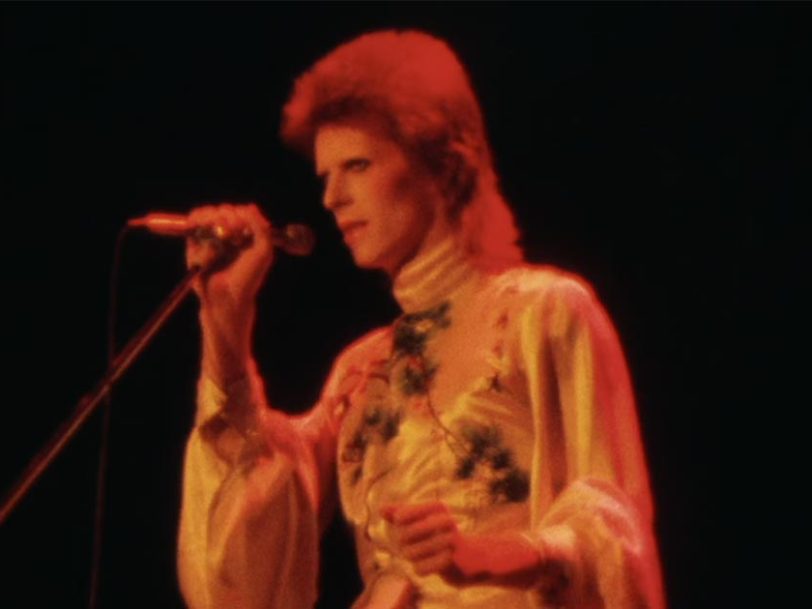The backstory: “I was wasted and miserable”
Released a little over a year earlier, in the summer of 1972, The Rise And Fall Of Ziggy Stardust And The Spiders From Mars launched Bowie into the stratosphere. Its follow-up album, Aladdin Sane, written while touring Ziggy Stardust through the US, sent him super nova: the music was more ambitious, the lyrics more enthralling, and yet Bowie’s commitment to the role of Ziggy had become all-consuming. Speaking to Rolling Stone’s Cameron Crowe in 1975, while recording his Station To Station album, he admitted, “I fell for Ziggy, too. It was quite easy to become obsessed night and day with the character… I got hopelessly lost in the fantasy.”
As the third leg of his UK Ziggy Stardust tour came to a close, planned European shows loomed, with a third US leg to follow. Potential live dates stretched into 1974, but Bowie couldn’t wait that long for it all to be over.
“I was now writing for a different kind of project and, exhausted and completely bored with the whole Ziggy concept, couldn’t keep my attention on the performance with much heart,” he wrote in the book Moonage Daydream, a collection of photographer Mick Rock’s images of the era. Not that fans noticed. Demand for Ziggy had become impossible to meet, even after Bowie began playing two shows a day when required.
“It was sold-out pandemonium and all the fans wanted a piece of Ziggy,” Mick Rock recalled. Speaking to Dig!, Spiders pianist Mike Garson adds that, not only did fans want a piece of Ziggy, many of them wanted to be Ziggy: “I remember looking to the audience and seeing so many faces with the David look,” he says. “It felt like Clonesville or something.”
Bowie, however, was done, his decision to “kill” Ziggy Stardust hastened when insatiable audiences began ripping seats from their fixings. “We got banned at a couple of places because of it,” Bowie later said. “I was wasted and miserable.”
The decision to retire Ziggy Stardust: “I wasn’t quite sure whether he meant he wasn’t going to perform live ever again”
Privately, Bowie had begun to confide in a few close associates about his plans for the future, and offered to help Spiders guitarist Mick Ronson launch a solo career without him. “I told him that I was close to wrapping the Ziggy thing up and he almost welcomed it as he was dead keen to have his own career as a solo artist,” Bowie later explained. “He asked me if I’d write a couple of songs for him, as writing wasn’t really his forte, to which of course I agreed. I would also do some back-up vocals as well.”
With the third UK leg of the Ziggy Stardust tour set to close with two nights at London’s Hammersmith Odeon, Bowie began to set the wheels in motion. Though unaware of just what he’d be filming, director DA Pennebaker (Dont Look Back, Monterey Pop) had been commissioned to document Bowie’s final Ziggy concert, though a plane strike caused him to arrive in the UK with only enough time to see Bowie’s penultimate performance for reference. Meanwhile, Mick Rock was given a couple of days’ advance warning, enabling him to prepare to capture history in the making, even if he wasn’t entirely clear on Bowie’s intentions. “I wasn’t quite sure whether he meant he wasn’t going to perform live ever again,” Rock told Uncut magazine 30 years later, “or whether he just meant as that persona.”
The final Ziggy Stardust concert: “I had never seen an audience like that”
With the cameras rolling, both backstage and front of house, Bowie knew his final Ziggy Stardust concert had to be memorable. The Hammersmith Odeon’s house announcer, however, couldn’t have guessed how right he would be when he announced the start of the show: “Ladies and gentlemen, straight from his fantastically successful world tour, including the Unites States Of America. Japan. Now his home country. For the last time: David Bowie!”
As Mick Ronson hammered out the riff to Hang On To Yourself, Bowie leapt forward to the microphone, clinging on as The Spiders took the Ziggy Stardust cut at a rapid pace. But if Bowie was listening to the lyrics (“Well come on, come on/We’ve really got a good thing going”), he didn’t have time to process what they might, in hindsight, have meant to fans who were unwittingly witnessing Ziggy’s last stand. With the song barely over, in the first of many costume changes that evening, Bowie’s wide-legged metallic red, black and blue suit was ripped in half by stagehands, revealing one of his skimpy silver kimonos for Ziggy’s theme song.




